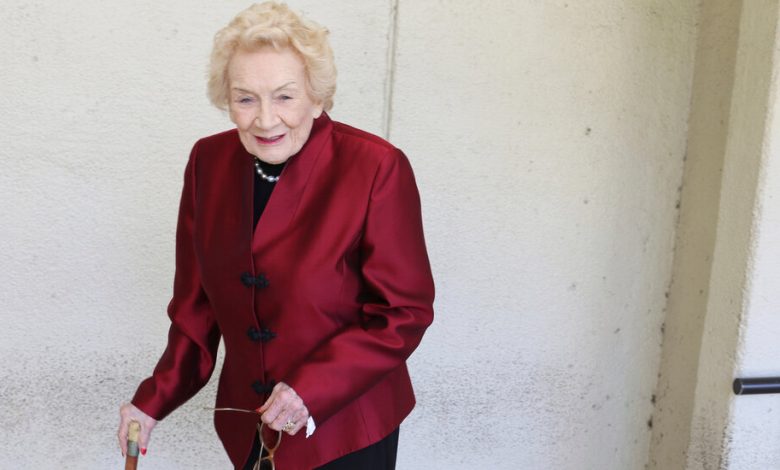Abigail Kawananakoa, 96, Dies; Claimed to Be Last Hawaiian Princess

Abigail Kawananakoa, whose claims to be the last princess of Hawaii and the heiress to one of its largest fortunes were only two high points in a life that also encompassed championship horse racing, identity theft and a legal battle with her own charitable foundation over her vast estate, died on Sunday at her home in Honolulu. She was 96.
Her death was announced by Paula Akana, the executive director of the Friends of Iolani Palace, the former royal residence of Hawaii’s rulers in Honolulu.
Ms. Kawananakoa, who also went by the nickname Kekau, was a sometimes divisive symbol of Hawaii’s past as an independent island nation. Her great-great uncle, David Kalakaua, was the last king. His successor, Queen Liliʻuokalani, was deposed in 1893 in a coup supported by American sugar barons, which led to Hawaii’s annexation by the United States in 1898.
She was not the only claimant to the nonexistent throne — a cousin, Owana Ka’okhelelani, insists that she is next in line — but Ms. Kawananakoa was widely considered the embodiment of the royal line, largely because she played the part so exquisitely, at times outlandishly.
As the heir to a $250 million chunk of the estate of her great-grandfather, James Campbell, a sugar baron, she lived a life of luxury fit for a queen. She was educated in boarding schools in China and California. She raised championship horses at her farms in Hawaii and on the mainland, and was inducted into the American Quarter Horse Hall of Fame in 2018.
While some in Hawaii thought she was out of touch and unaware of the needs of everyday islanders, others appreciated her concern for the country’s historic and natural heritage. She funded scholarships, fought a plan to place a large telescope on Mauna Kea and, in her will, left $100 million to help Hawaiian causes.
For nearly 30 years she ran the Friends of Iolani Palace, a high-profile preservation group. She meticulously restored the faded institution to its former glory, traveling the world to buy back furniture and artifacts that had been sold off by the state government.
Like any good noble, she could also be imperious. After sitting in the royal — and very fragile — Hawaiian throne for a Life magazine photo shoot in 1998, she brushed off an ensuing rebellion by the Iolani palace staff.
“Does the tail wag the dog, or does the dog wag the tail?” she asked The Honolulu Star-Bulletin. “As long as I’m here, the dog is going to wag the tail.”
Such haughtiness had its limits: She resigned as president after the palace’s curator quit and 150 volunteers threatened to follow him.
“They asked for my head and I gave it to them,” she told The Star-Bulletin.
Sometimes she attracted the wrong kind of attention. Starting in the late 1990s, a cafeteria worker in Philadelphia named Abigail Roberts began to impersonate Ms. Kawananakoa, convincing credit agencies that she was the true Hawaiian princess. Twice she got the I.R.S. to send her Ms. Kawananakoa’s tax refund. She also once traveled to Hawaii to stake a claim, unsuccessfully, to the Campbell fortune.
Ms. Kawananakoa is survived by her wife, Veronica Gail Kawananakoa, whom she married in 2017, the same year she suffered a stroke. Soon afterward her lawyer, James Wright, claimed that Veronica had physically abused her, after which Ms. Kawananakoa fired him. She also attempted to change her will to include her wife, a move that many feared would endanger the large portion left to charity.
That led to a drawn out legal fight pitting the Kawananakoas against Mr. Wright and her own charitable organization, the Abigail K.K. Kawananakoa Foundation. She would arrive in court in designer clothes and oversize sunglasses, with her wife and Chihuahua, Girlie Girl, in tow.
The case revolved around Ms. Kawananakoa’s mental competency — whether her stroke had left her incapable of making informed changes to her estate. In 2020 the court ruled against her, keeping the will intact.
Abigail Kinoiki Kekaulike Kawananakoa was born on April 23, 1926, in Honolulu to William Jeremiah Ellerbrock, a doctor, and Lydia Liliuokalani Kawananakoa, whose father, David Kawananakoa, was an heir to the Hawaiian throne.
After her parents divorced, Abigail was adopted by her grandmother Princess Abigail Campbell Kawananakoa, to strengthen the girl’s eventual (if always hypothetical) claim to the throne.
Ms. Kawananakoa studied for two years at Dominican College, in San Rafael, Calif., and briefly at the University of Hawaii. She later worked for the State Legislature, but she spent most of her time building her reputation as the living symbol of the bygone Hawaiian monarchy.
Even after her forced resignation from the Friends of Iolani Palace, she continued to support it, spending hundreds of thousands of dollars to balance its finances in the 2000s. She once paid $110,000 at a fund-raising auction to buy the right to hold a party there — in large part to prevent nonroyals from sullying what she considered her ancestral home.
“The palace should be revered, it should be treated like a royal palace,” she told The Honolulu Advertiser in 2007. “To rent it, to have somebody have a party there, and to try to make money that way, it’s unseemly.”